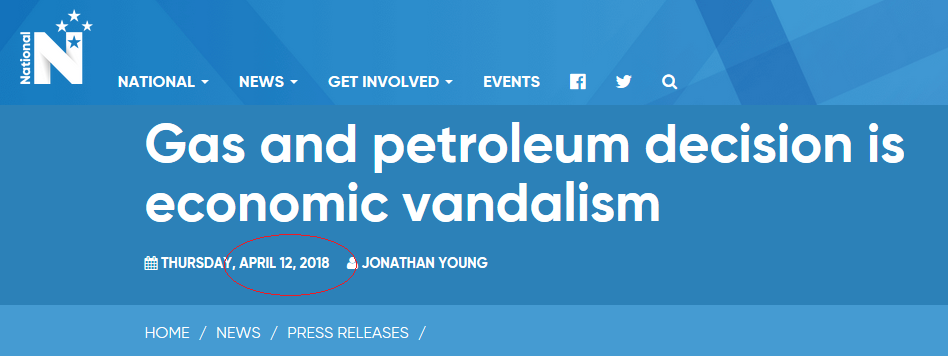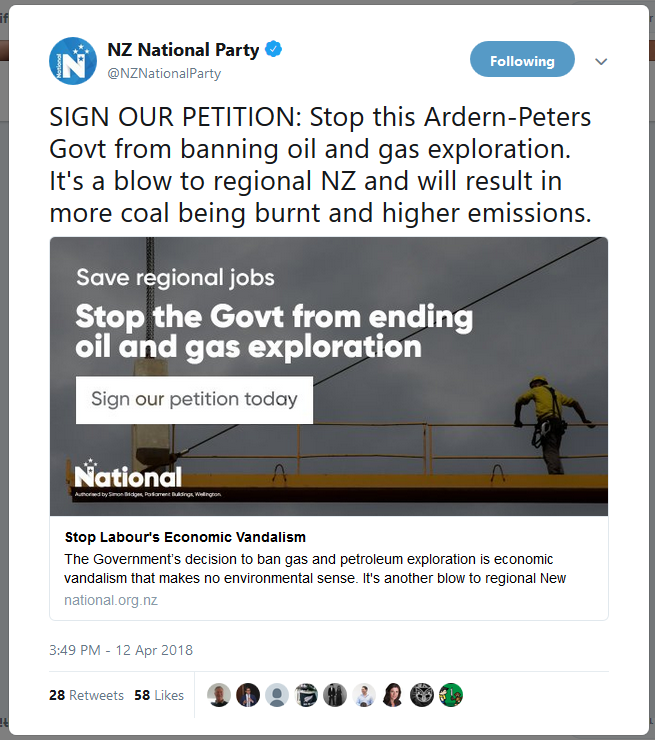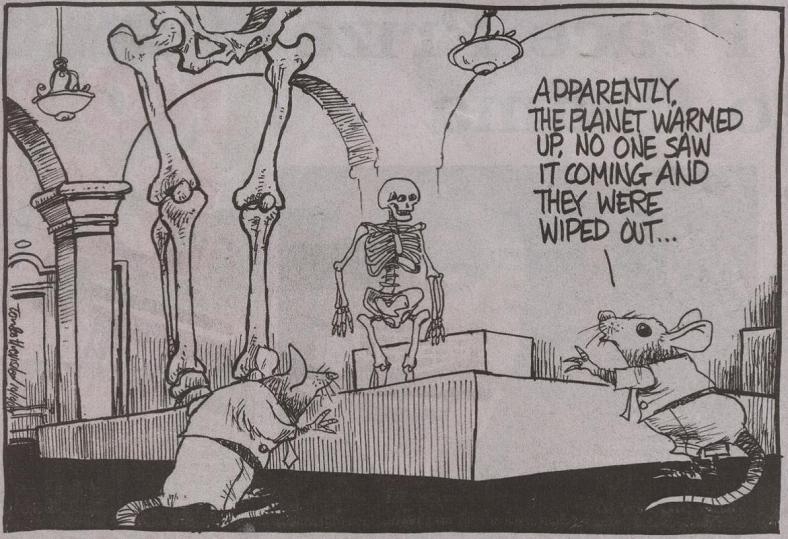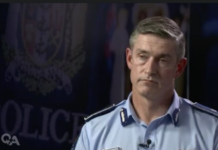.

.
Act I – Post-election, Dealing the Cards
During the post-election coalition negotiations last year, there was much entrails-reading of which way NZ First would move to form a new government. Labour and NZ First? Or National and NZ First?
Then came the novel suggestion from several media and mostly right-leaning political commentators – all with singularly hyper-active imaginations – of a potential National-Green Coalition government. This was mentioned by Laura Walters and Katie Kenny, on 24 September (2017), both writing for Fairfax media; former National PM, Jim Bolger on 25 September, talking with John Campbell on Radio NZ’s Checkpoint; Bill English on 25 September; National’s deputy Paula Bennett on 29 September; Jim Bolger again on 1 October; Fairfax’s Tracy Watkins on 2 October, et al…
The ‘cheerleaders’ were lining up to “encourage” (and in one instance, demand!) the installation of a ‘Teal’ Coalition.
Even former cricketer-turned-Mediaworks-AM Show presenter , Mark Richardson, offered his one cent worth of advice to Green Party leader James Shaw to “be a risk taker and back yourself” by coalescing with the Nats. (Though Richardson admitted that a decision by Shaw to coalesce with National would “blow his Party to smithereens“. This did not seem to perturb Richardson, a self-confessed National Party supporter.)
Tracy Watkins had to concede that any coalition deal with the Nats was a lengthy, but guaranteed, political suicide mission, “National has used up all its future coalition partners. United Future and the Maori Party are gone and ACT is on life support“.
Strangely, Shaw’s response was utterly predictable. He would take a phone call from then National-leader Bill English… but…
“It’s my responsibility to do so. And we’ll have to see what they’ve got to say. But one of the things I will be saying in return is ‘You know we campaigned on a change of government and you know what was in our manifesto … and how incongruous that is to what the National Party policy programme is’.”
Act II – Was a ‘Teal’ Deal the Real Deal?
So how viable would a coalition have been between two political parties that – on the face of things have as much in common as a chicken and a platypus?
Not much, it would seem.
On several occassions, National’s current caretaker Leader, Simon Bridges criticised the Green Party’s policies on social issues;
“In terms of the Greens, if they were a true environmental party that wasn’t focused on other bits and bobs, they could be a party that we could work with and work with strongly,” Bridges said on Tuesday.
And;
“You’ve seen me say that I think actually there is a role for us in the environment.
I do have problems with the fact that they’re more than simply an environmental party – a lot of other stuff I disagree with, but on the environment we know… New Zealanders care passionately about this.”
And;
“It’s a deep red rather than Green. I’m interested in working with them on genuine conservation, environmental issues but not picketing on the streets.”
The sub-text of that narrative was for the Green Party to neuter itself. As James Shaw had to point out to Simon Bridges – much like an exasperated parent patiently explaining something to a young child;
“History has shown that people want to vote for parties on a range of issues. We’ve always said that sustainability is a function of society, of the environment, and of the economy, and you can’t disaggregate those things,”
It would not be dissimilar to the Green Party dictating to National to abandon it’s close links to corporate interests, the farming sector, and other pro-business lobby groups. A point made by recently-elected Green Party Party co-leader, and former Daily Blog contributor, Marama Davidson;
“They’ve got to change a lot. It’s not good enough that Simon’s trying to position himself as all of a sudden caring about our rivers and our water, when his very policies under his party led to the exact environmental degradation that we’re seeing. He wanted to open up drilling to our Maui dolphins’ home.
They don’t understand the connection of the flawed economic model that led to the environmental degradation in the first place. They would have to change a lot, and I don’t think that’s what they intend to do.”
So how ‘green’ is our true-blue National Party?
Act III – National plays the Green Card
On 28 April, at a so-called “Bluegreens” Forum – a greenwashed front for the National Party – Simon Bridges made much of his party’s “green credentials“;
“Good environmental practice is crucial for securing the type of future we want for our children and grandchildren.
My view is that people aren’t used to hearing a National Party leader talk like this, but I’ve said right from the start that the environment is important to me and the National Party … The environment isn’t an optional extra.
Climate change is going to be one of the most challenging issues of our time. We’ve made some good progress in recent years, but we need to do much more.
We now need to wrestle emissions down, just staying stable doesn’t cut it … We need to incentivise households, businesses, scientists and entrepreneurs to be developing and implementing technological solutions.”
Note; the reported comment from Bridges – “Good environmental practice is crucial for securing the type of future we want for our children and grandchildren” – is almost a word-for-word repeat from last year’s National’s Environment policy on their website;
.

.
Most crucially, note Bridges reference to needing “ to incentivise households, businesses, scientists and entrepreneurs to be developing and implementing technological solutions“.
“Developing and implementing technological solutions” – not reducing reliance on fossil fuels. For National that was a No-Go Area.
Not so for this coalition government.
On 12 April, Prime Minister Jacinda Ardern announced that “There will be no further offshore oil and gas exploration permits granted“. She said;
“This is a responsible step which provides certainty for businesses and communities that rely on fossil fuels. We’re striking the right balance for New Zealand – we’re protecting existing industry, and protecting future generations from climate change.”
More than “a step”, it was a bold leap – perhaps one of the most radical since New Zealand declared itself a nuclear-free nation on 8 June 1987. Climate change officially became this generation’s “nuclear free moment” on 12 April 2018.
Without doubt, it would be an expensive proposition to forego possible, undiscovered, oil reserves that might be worthy millions – billions! – to our country.
But the cost of runaway climate change; increasing CO2; rising temperatures and sea levels; more energetic storms; growing threats of flooding and coastal storm surges; harsher droughts; heavier rains – would cost us billions as well. With rising sea levels and more powerful storm surges, thousands of homes were now within coastal danger zones;
“Climate change will increasingly create severe risks for New Zealand’s coastal housing stock. Even a small amount of sea-level rise will substantially exacerbate the costs of flooding and storm surges. Under the most optimistic emissions scenario studied by the Intergovernmental Panel on Climate Change, global average sea levels will likely rise by between 44cm and 55cm by 2100, and around 1 m with continued high emissions. Across New Zealand, for regions with high-quality data, there are 43,683 homes within 1.5m of the present average spring high tide and 8,806 homes within 50cm.”
According to the Ministry for the Environment, the cost of not addressing climate change threats cannot even be accurately ascertained;
The costs of inaction are difficult to quantify as they depend on the actions that the whole world takes to reduce emissions, not just New Zealand. The costs of inaction will be large but are hard to predict accurately and hard to express in monetary terms. This is also the case for modelling co-benefits of action such as air quality and health benefits. Current research and model development is beginning to address these complexities.
As a rough indicator, the cost of the Christchurch earthquakes was estimated to be about $40 billion (in 2015 dollars), which includes $16 billion for residential construction. Around 10,000 homes were demolished due to earthquake damage. Compare that figure with Motu’s; “43,683 homes within 1.5m of the present average spring high tide and 8,806 homes within 50cm“.
Regrettably, National’s green rhetoric and Simon Bridges’ pious claims were not matched with more recent stated intentions – intentions that pose a direct threat to the long-term environmental well-being of our country as well as the entire planet.
Despite Simon Bridges asserting that “climate change is going to be one of the most challenging issues of our time. We’ve made some good progress in recent years, but we need to do much more” – National was going to do everything in it’s power to oppose practical solutions to reduce climate gas emissions.
Bridges point-blank refused to “do much more“.
Act IV – Blue card trumps Green for Bridges?
Soon after Prime Minister Ardern issued her government’s 12 April Declaration, Bridges responded like a child with his favourite toy taken off him;
“If we are the Government in two years we will change it back.”
Bridges’ double-speak on environmental matters was pointed out by Fairfax’s Laura Walters in no uncertain terms;
Bridges had made a point of talking about National’s future environmental direction, and saying he would be open to working with the Green Party in the future – something the Greens have said was unlikely to happen.
However, when he was asked about his plans for the environment on Thursday, he was not able to point to any policies, or general policy areas.
In case Bridges protests at being “unfairly misquoted” in the media, his follow MPs were also vociferous in their opposition to the coalition government’s decision to curtail further offshore oil and gas exploration. In a recent press release, National’s Energy and Resources Spokesperson, Jonathan Young, said;
“The Government’s decision to ban gas and petroleum exploration is economic vandalism that makes no environmental sense […]
This decision will ensure the demise of an industry that provides over 8000 high paying jobs and $2.5 billion for the economy.
Without exploration there will be no investment in oil and gas production or the downstream industries. That means significantly fewer jobs.
This decision is devoid of any rationale. It certainly has nothing to do with climate change. These changes will simply shift production elsewhere in the world, not reduce emissions.”
And in a bizarre twist, National’s own Climate Change spokesperson, Todd Muller, also condemned winding back New Zealand’s fossil fuel industry. In the same press release as Jonathan Young, he said;
“The decision makes no sense – environmentally or economically – because less gas production means more coal being burnt and higher carbon emissions.
Many overseas countries depend on coal for energy production. Those CO2 emissions would halve if they could switch to natural gas while they transition to renewable energy.
By stopping New Zealand’s gas exploration we are turning our backs on an opportunity to help reduce global emissions while providing a major economic return to improve our standard of living and the environment.
We need to reduce global CO2 emissions. But there is no need to put an entire industry and thousands of New Zealanders’ jobs at risk.
The Government’s decision today is another blow to regional New Zealand, and Taranaki in particular.
It comes hot on the heels of big decisions that reduce roading expenditure, cancel irrigation funding, and discourage international investment in the regions.”
Todd Mueller has the wrong job title. With his unwavering support for the fossil fuel industry and increased roading expenditure, he should be National’s Increasing Greenhouse Gas Emissions spokesperson. Nothing that Mueller has said would lead to any reduction in dangerous emissions from burning fossil fuels.
The press release from Young and Mueller was also dated 12 April;
.

.
– the same day Prime Minister Ardern released her statement to wind-back oil and gas exploration off our coast. This indicates how long and hard Young and Mueller must have thought deeply on this matter before issuing their press release.
Not content with being advocates for the fossil fuel industry, Simon Bridges announced eighteen days later that a National government would over-turn the coalition government’s regional fuel tax in Auckland;
“A re-elected National Party will overturn the Government’s regional fuel tax to leave more money in the back pockets of hard-working New Zealand families.
Regional fuel taxes are unfair on New Zealanders. They are regressive, and hit poorer New Zealanders the hardest.
The fuel taxes the Government has announced will leave a typical Auckland family around $700 a year out of pocket.
The regional fuel tax is simply punishing Aucklanders for the Government and the Council’s lack of fiscal discipline.
[…]
And to Councils I say don’t get used to this raid on the back pockets of hard working New Zealanders because a re-elected National Government will repeal this tax.”
Bridges attacked Auckland Mayor Phil Goff;
“Auckland Council is a clear case in point. We know it is a free spender of rate-payers money. It was true under Len Brown and it’s true under Phil Goff.”
Which contrasted with former National Party leader and PM, John Key, who all but endorsed Phil Goff’s bid for the mayoralty in 2015;
“Phil Goff has been a very long standing member of Parliament. It was quite a combative relationship when he was leader of the opposition, but there’s no question he had a big work rate and he was a very effective minster.”
Simon Bridges obviously didn’t get the memo from Key’s office that Goff “was a very effective minster“.
It is also worth remembering that when National was in power, they also raised the petrol excise duty by nine cents per litre over a three year period, with Road user charges increasing similarly. In March 2009, National’s Transport Minister, Steven Joyce announced;
”Our preference is for a simpler system which delivers benefits to road users across the board.” From 1 October this year motorists will pay an increase of 3 cents per litre in fuel excise duty and drivers of diesel vehicles will pay the equivalent in road user charges. A second 3 cents increase will occur at October 1 next year. Each 3 cent per litre increase includes an annual increase of 1.5 cents per litre scheduled by the previous government.
…these smaller adjustments to roading excise and road user charges across New Zealand will make more funding available for roading across the country.”
Evidently, increasing fuel excise taxes for more roads (and thereby more cars) is a good thing. But increasing fuel excise taxes to fund public transport initiatives – thereby assisting in reducing greenhouse gas emissions – is a bad thing. How else could one interpret National’s contradictory statements and policies?
National took matters a step further when they announced on Twitter a petition to persuade the coalition government to reverse it’s decision to ban offshore exploration;
.

.
This wasn’t just Opposition for the sake of opposition. National’s petition signalled a deep ideological opposition to any steps that would reduce the production of fossil fuels in this country. The prospect of losing revenue from this industry – despite being a major contributor to greenhouse gas emissions – was simply too much for National to contemplate.
National was signalling to all and sundry that given a choice between maintaining the fossil fuel industry and keeping the revenue stream from it – or beginning a slow phase-out and reduced revenue, the winner would always be industry.
And the environment be damned.
So much for the pious sentiments from Bridges at the National’s Bluegreen Conference;
“Good environmental practice is crucial for securing the type of future we want for our children and grandchildren.”
So with National’s antipathy to taking the crucial, hard steps to reduce greenhouse gas emissions, what was National’s reasoning to entice the Green Party into a coalition deal (or at least a confidence and supply arrangement)?
The answer came from Bluegreens co-chairman, Geoff Thompson. Thompson was unequivocally clear in his stated intention to using his front-organisation as a way for National to return to power;
“We’re a well-liked party … but it’s not good enough. Forty-four per cent [in a recent poll] doesn’t get us there so we want to expand and we see the environmental side of the party, that’s us, as being an opportunity for that expansion.”
For National, “to expand … we see the environmental … as being an opportunity for that expansion” was the answer.
Appealing to the Green Party to work with National would have been made with generous offers.
But the reality is that the Nats would have demanded that the Greens abandon;
- their “red green” “bits and bobs” social policies;
- their policies to move away from oil and gas exploration;
- and policies to improve public transport in Auckland through regional fuel taxes
In short, the Green Party would have found itself neutered on their environmental as well as social policies.
That would have left the Greens with no alternative but to dump their coalition deal, thereby probably triggering an early election. And we all know how voters treat small political parties that cause early elections.
Simon Bridges and his National Party have demonstrated through their opposition to abandoning offshore oil and gas exploration permits that they have very little interest in environmental issues. It is even doubtful they will ever fully honour the Paris Climate Agreement.
As early as 2012, National had already broken it’s commitment to include agriculture in the emissions trading scheme;
.

.
National’s behaviour in the last few months have proven that a coalition with the Green Party is not only impossible – but fraught with danger of broken promises and backsliding on environmental commitments.
National would always give pre-eminence to industry; fossil fuel production, and building roads. Environmentalism, alternative fuels, and public transport would always taken second priority – if at all.
Epilogue – Whatever the game, Physics Wins. Always.
In June 2016, atmospheric carbon dioxide reached 400 parts per million (ppm) at NIWA’s Clean Air Monitoring Station at Baring Head, Wellington;
It came a year after it was crossed at the Mauna Loa station in Hawaii, which has recorded a 24 per cent rise in carbon dioxide levels since it began gathering data in 1958.
[…]
Last month, the level was passed at the Australian monitoring station at Cape Grim, Tasmania.
Like something out of Neville Shute’s post-apocalyptic novel, “On The Beach“, but instead of a deadly radioactive cloud, heightened CO2 levels have reached Australia, and shortly thereafter, New Zealand.
In April last year, Hawaii’s Mauna Loa Observatory detected CO2 reaching 410 parts per million for the first time in our recorded history.
We should be recording that level about now, here at the bottom of the world.
It is a grim reminder that rising CO2, methane, and nitrous oxide wait for no man (or woman). Not even for Simon Bridges.
Meanwhile, NIWA reported that January 2018 was New Zealand’s hottest month on record;
NIWA figures show average temperatures for the month of January across the country was 20.3°C.
The temperature for January normally averages 17.1°.
NIWA climate scientist Gregor Macara said the month’s temperatures were unprecedented.
“It was unusual that the entire country seemed to observe temperatures that weren’t only above average, but really considerably above average.”
“The majority of observation stations we had observed temperatures more than 3° above normal and in fact there are quite a few sites that were 4° above normal which were essentially unprecedented – particularly for this time of year,” he said.
While we baked, Simon Bridges and his cronies in the National Party were planning to over-turn any practical steps taken by the current coalition government to do our bit to try to reduce CO2 emissions.
This is why any talk of a Greens coalition with National is ludicrous. National’s policies, ideology, and base-support is not compatible with environmental protection.
National is part of the problem.
The Joker in the pack
From April 2014;
.

.
“Out of touch” doesn’t even begin to cover Simon Bridges and the environment.
.
Note: All National Party webspages have been downloaded and saved for future reference. (They have a ‘habit’ of disappearing after a while.)
.
.
.
References
Radio NZ: NZ First to meet National and Labour today
Fairfax media: The coalitions that could form NZ’s 52nd Government and how likely they are
Fairfax media: The day after the election
Radio NZ: Former PM Jim Bolger on how to deal with Winston Peters
Newsroom: National single-minded about its only option
Fairfax media: National wants conversation with Greens, official talks yet to begin
Fairfax media: Greens have a responsibility to talk to National – Jim Bolger
NZ Herald: Grassroots petition calls for National-Green coalition
Fairfax media: Politically Correct – Green Party won’t pick up the phone
Fairfax media: AM Show host Mark Richardson’s advice to Green Party leader – ‘Be a risk-taker’
Fairfax media: Mark Richardson declares himself as a National supporter, does that matter?
Fairfax media: Bridges offers olive branch out to Greens, only to be quickly shot down
Mediaworks: National open to working with Greens, NZ First – Simon Bridges
Mediaworks: National needs to ‘change a lot’ to get Greens onside – Marama Davidson
Fairfax media: National Party ‘resetting our approach to environmental issues’ – Bridges
National Party: 2017 Environment Policy
Beehive.govt.nz: Planning for the future – no new offshore oil and gas exploration permits
NZhistory.govt.nz: New Zealand goes nuclear-free
Fairfax media: How climate change could send your insurance costs soaring
Motu: Insurance, Housing and Climate Change Adapation:Current Knowledge and future research
Ministry for the Environment: Modelling the economic costs of New Zealand’s intended nationally determined contribution
RBNZ: The Canterbury rebuild five years on from the Christchurch earthquake
NZ Herald: Christchurch Earthquake: 100,000 homes damaged, 10,000 unsavable
Fairfax media: Nats would reverse Govt’s decision on oil and gas exploration
National Party: Gas and petroleum decision is economic vandalism
National Party: National to overturn Government’s regional fuel tax
NZ Herald: John Key willing to work with Phil Goff
Ministry of Transport: Increases to petrol excise duty and road user charges
Beehive.govt.nz: Regional fuel taxes replaced
Twitter: National – Sign our Petition
Ministry for the Environment: The Paris Agreement
Radio NZ: Farmers’ ETS exemption progresses
NZ Herald: Scientists record symbolic milestone, and it’s not one to celebrate
NIWA: Baring Head greenhouse gases
Bulletin of the Atomic Scientist: The continuing relevance of “On the Beach”
Scientific American: We Just Breached the 410 PPM Threshold for CO2
Radio NZ: January 2018 NZ’s hottest month on record
Mediaworks: Minister didn’t know park was in drilling plan
Additional
Monkeywrench (Sandor.net): The Politics of Green Coalitions – rethinking our strategy and positioning
Monkeywrench (Sandor.net): Which way Winston, and what’s in it for the Greens?
Ministry for the Environment: Overview of likely climate change impacts in New Zealand
Other Blogs
The Standard: How a National/Green coalition could work
Previous related blogposts
As predicted: National abandons climate-change responsibilities
ETS – National continues to fart around
National’s moving goalposts on climate change targets
.
.
.

.
.
= fs =






\
A devastating critique and conclusion why the Greens must not, cannot, have anything to do with National. Bridges’ duplicity and love affair with the fossil fuel industry makes any deal with the tories untenable. It’s good to be reminded of these things every so often.
‘Whatever the game, Physics Wins. Always’
Well said, Frank. But don’t forget chemistry and geology and ecology, and a host of other hugely important fundamental governers that politicians routinely ignore. In fact we could go as far as saying politicians ignore all the governing factors as a matter of policy.
The young people of NZ, including that idiot Simon Bridges and the other saboteurs that constitute the National Party, are well and truly fucked. The Sixth Great Extinction Event is well underway and is gathering pace as a consequence of the lunacy of loot-and-pollute policies that are promoted almost everywhere.
412.10 ppm, a new record high. And still another couple of weeks until the photosynthesis-dependent peak is reached.
One of the scariest graphs ever:
https://scripps.ucsd.edu/programs/keelingcurve/wp-content/plugins/sio-bluemoon/graphs/co2_800k.png
Without doubt, it would be an expensive proposition to forego possible, undiscovered, oil reserves that might be worthy millions – billions! – to our country.
But the cost of runaway climate change; increasing CO2; rising temperatures and sea levels; more energetic storms; growing threats of flooding and coastal storm surges; harsher droughts; heavier rains – would cost us billions as well.
That’s a very disingenuous statement imo. You’ve attempted to create a false equivalence that the CO2 emissions produced by NZ alone would cause catastrophic climate change, strongly implying it would ultimately cost us just as much as any potential gain we got from extracting said oil. You really need to reword that statement to align it with the facts of the total NZ contribution to the alleged climate change any oil exploration/extraction here would have (which is obviously preciously little in the grand scheme of things).
Actually, Nitrium, he did. Frank pointed out the cost of the Christchurch rebuild and that’s a fairly good indicator what we’d be looking at with rising sea levels and storm surges impacting on coastal settlements.
You’ve only selectively pointed to one part of his essay. If anyone is disingenous…..
‘hard steps to reduce greenhouse gas emissions’
As Afew points out we are @ 412.10 ppm CO2
Just as water is wet and fire burns, 412.10 ppm CO2 = nothing humans can do about it.
And the fact the environment has gone from 280 ish to 412 ppm in less than 300 years, as compared with the The FIFTH Great Extinction Event when it took 10,000 years to get their …. with most of the ‘Fifth’ going extinct way way B4 412ppm CO2.
The bullet has not only left the barrel, it is burred in the wall behind our collective head.
Talking about reducing emissions now is like Captain Edward J. Smith, booking the dry dock in New York, for a bit of panel work on his boat.
Once the ice has melted this party is over, actually there will still be ice post human, we haven’t got that long.
137,970,000 Children that have died in the last 18 years, who if given the same opportunity we had would be alive.
ops 137,970 )
No dame it, it is 137 million children in 18 years @ 21,000 per day.
National have promoted the worst transport policy in history by culling rail for more trucks to increase the emissions of CO2 levels five times more by choosing to using road freight vs rail freight.
We need to move half the road freight back to rail as soon as we can.
Then use carbon pricing of all products made and transported using the EU model of carbon “food miles” pricing now on all products not just food.
This may finally setup opur clean transport system we most need.
https://en.wikipedia.org/wiki/Food_miles
Food miles is a term which refers to the distance food is transported from the time of its production until it reaches the consumer. Food miles are one factor used when assessing the environmental impact of food, including the impact on global warming.[1]
The concept of food miles originated in the early 1990s in the United Kingdom. It was conceived by Professor Tim Lang[2] at the Sustainable Agriculture Food and Environment (SAFE) Alliance[3] and first appeared in print in a report “The Food Miles Report: The dangers of long-distance food transport”, researched and written by Angela Paxton.[4][5]
Some scholars believe that an increase in the distance food travels is due to the globalization of trade; the focus of food supply bases into fewer, larger districts; drastic changes in delivery patterns; the increase in processed and packaged foods; and making fewer trips to the supermarket. These make a small part of the greenhouse gas emissions created by food; 83% of overall emissions of CO2 are in production phases.[6]
Simon Burned Bridges held a hopeless speech on the budget in Parliament today, I have written him off, and rather listen to true alternative and revolutionary music, for the betterment of people:
https://www.youtube.com/watch?v=oXjK3BLyzPI&list=RDoXjK3BLyzPI&t=36
Doesn’t deserve a comment, go to OPEN MIKE.
I just dont get it. Climate change came about because the global warming hypothesis failed because CO2 increases dont equate to warming. Even Monbiot gets it ranking toxic pollution and agriculture as the number 1 environmental threat as it is at the forefront of devastating biodiversity and poisoning our food killing us and the world around us. Yet not a single cent in this budget goes to cutting pesticide use and no support for organic agriculture. In my opinion climate change is a giant con to distract the environmental movement and allow the agrichemical industry to carry on polluting and killing us for their profit. Nobody in the Greens seems to remember Rachel Carsons “Silent Spring” and the devastation pesticides brings to the environment.
Want to know why the climate is changing? The earths magnetic poles are reversing and the magnetic shield is weakening as part of this process letting in more energy which creates more extreme weather events. https://www.youtube.com/watch?v=nsqZJP54shg&list=PLHSoxioQtwZcJiKVxaGLoL3cD2WBPby3z&index=22
The Greens have been infiltrated by the Banksters with their lead man to move the Greens away from actually dealing with the #1 environmental issue: Toxic industry and Toxic agriculture and GMOs. The real killers of us and the planet.
[…] blogpost was first published on The Daily Blog on 17 May […]
Comments are closed.